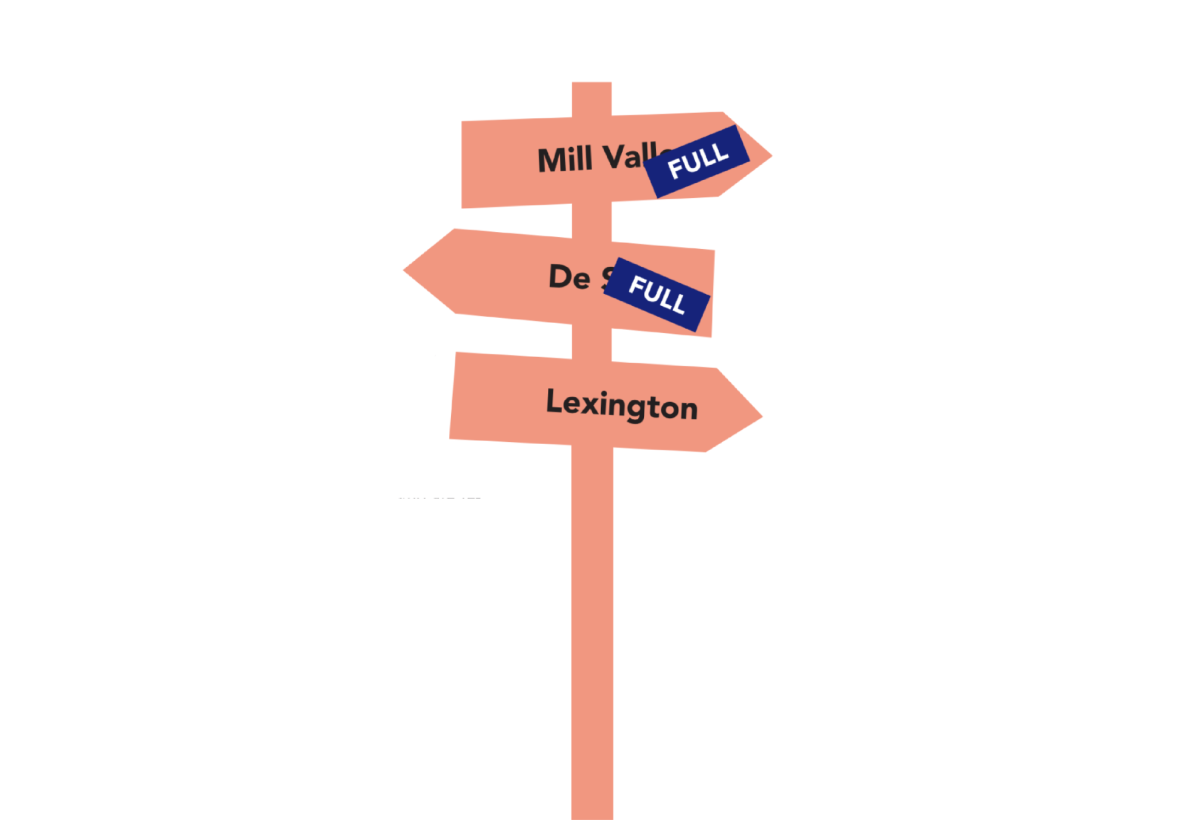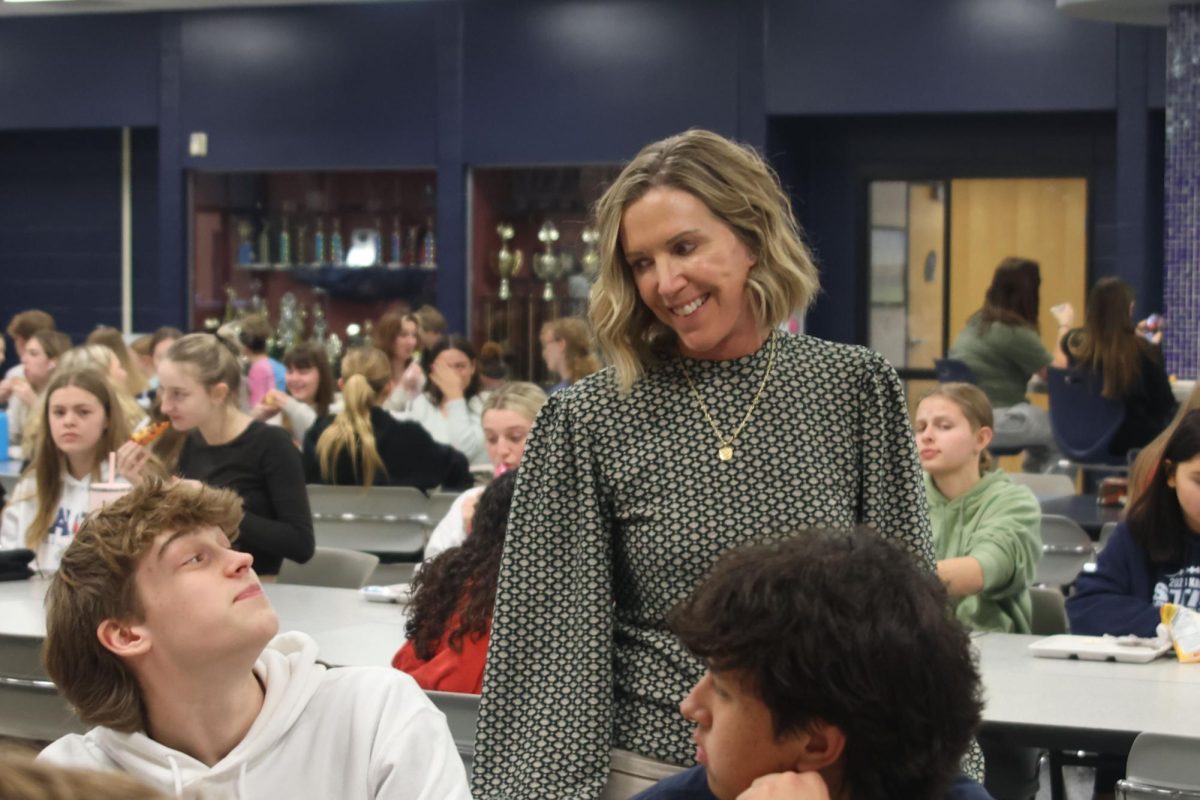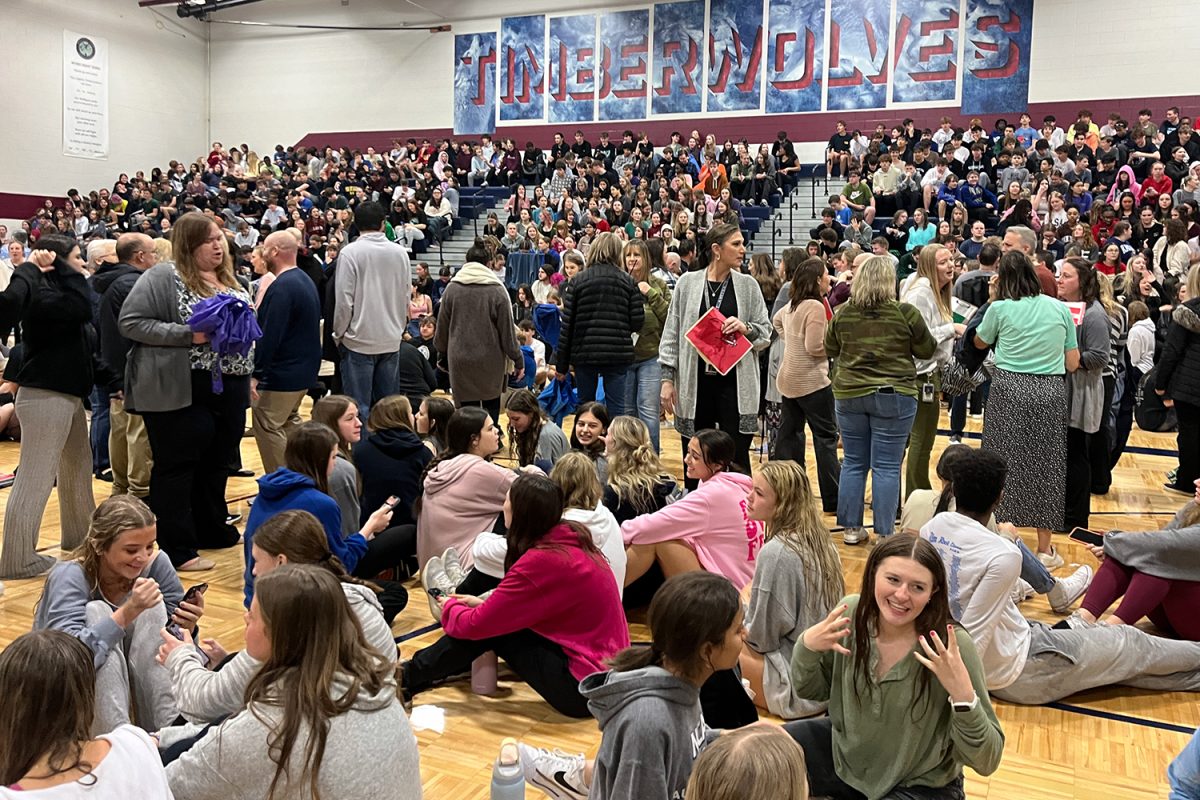Administration and staff members deal with general increase in class sizes in future years.
As the general trend for class sizes increases for next year, many teachers and students are somewhat concerned, while building principals remain positive in the district’s efforts to keep class sizes manageable.
This year, according to the core department chairs, English classes average about 26 students per class, science classes average in the upper 20s, social studies average around 23 per class and math class average 22 to 24. All core department chairs see class sizes going up in the future.
Social studies teacher Chris Dunback has seen his class sizes rise from the mid 20s to the upper 20s in the last five years. Dunback’s classes range from 21 students to his largest class of 28 students, which is one of the largest core classes in the school.
“Teachers are required to teach all students and some students require accommodations,” Dunback said. “It’s not unusual for one-third of the students to need more help, one-third to need less help and one-third to be okay. The larger the class, the more diverse needs there are.”
De Soto High School principal David Morford said teacher adaptability influences their ability to handle larger class sizes.
“We have good teachers who are going to give effort whatever class size is,” Morford said.
Next year, Mill Valley High School will hire at least one new teacher in the drafting department and possibly one teacher in the social studies department. Morford has also requested additional teachers at DHS.
District director of administrative services and community relations Alvie Cater said teachers are having to be maximized in the district.
“Public schools must find ways to be more efficient and at the same time continue offering outstanding educational opportunities for students,” Cater said via e-mail. “As such, we have to find new ways to maximize our staffing patterns across all grade levels. Obviously, one area to research is class size and how best to use our talented teachers and support staff.”
Even with up to two new teachers at MVHS, next year presents unique challenges, including a large incoming freshman class.
Principal Tobie Waldeck said he is not concerned at this time about class sizes and cannot predict class trends or numbers.
“I’m positive because we always try to do what’s right for kids,” Waldeck said. “I do feel like if we’re going to have a problem, we have to get the numbers, see the problem, and work through what we need to do from there.”
Art teacher Jodi Ellis, is concerned about class sizes as art teachers like Jerry Howard teach non-art department classes next year. She sees class sizes of around 25.
Even this year, in Ellis’ Painting classes, easels can no longer be used due to overcrowding.
“It’s just a challenge I think in giving enough attention to each student,” Ellis said. “When classes were smaller, I wasn’t quite as exhausted at the end of the day.”
Junior Emily Adams, who is in Ellis’ Blue 4 Painting class, says they don’t use easels in class but she doesn’t notice too much of a change, except in Ellis’ reaction to the increase in class sizes.
“We did a still life with Tempera paints and we all had to use the personal boards you clip things into,” Adams said. “She’s pretty good at handling it, she gets a little more stressed out than she did before though.”
Districts across the state are all being affected as the state budget allotted for education continues to drop, many are even in a hiring freeze. The De Soto school district has cut $4 million in budget since March 2009 and has had to add two to three additional students per class but is not in a hiring freeze.
“We are bracing for additional reductions in funding from the state of Kansas,” Cater said. “We want to protect class size as much as possible, but will have to look at all grade levels and see if there are additional ways for us to be more efficient.”
Despite decreasing budget, growth could benefit the district.
“The big thing we’re having going for us has been the growth,” Morford said. “New students don’t necessarily mean new money or an increase in money but they can make up some of the difference in what money has been lost.”
Although the general trend is increasing, not all classes will rise and not all staff and students are concerned. Principals remain confident in future numbers and the scheduling process.
“I haven’t really seen a big negative impact,” Morford said. “We hire good teachers. A good teacher is adaptable.”







